- The University of Minnesota and the Kerlan Collection
- The Background of Children's Literature Curator
- What a Children's Literature Curator Does
- Changing Nature of Children's Literature and the Role Children's Literature in Society
- The German Connection
When looking for a subject to write about for this issue of LIBREAS I did not have to look far. Located two floors above my office in Andersen Library at the University of Minnesota is one of the world's premier children's literature collections, the Children's Literature Research Collection (CLRC). The CLRC consists of six core collections and numerous smaller collections. One of the largest collections within the CLRC is the Kerlan Collection.
I had the opportunity to sit down with Karin Nelson Hoyle. As the majority of our readership is students and new professionals, I asked her, as the curator of the Kerlan Collection, to talk about her background and her journey to becoming the curator of the collection. In keeping with the theme of the issue, the comparison between situations and environments in Berlin and St. Paul, Karen related that she has spent considerable time in Germany, both in personal travel and in completing her education. In addition to discussing her background, we discussed the nature of her job, the position of the collection in the University of Minnesota libraries, the changing nature of children's literature, the collection itself and the role of children's literature in broader society.
The University of Minnesota and the Kerlan Collection
The University of Minnesota is a large public research university, with the fourth largest student population in the United States, with over 51,000 students (http://nces.ed.gov/globallocator/col_info_popup.asp?ID=174066). The library system is correspondingly large, with fourteen campus libraries serving the needs of the student body.
The Kerlan Collection was formerly housed on the East Bank in Walter Library, the science and engineering library on campus. While it was housed in Walter, it was close to both the English department and the College of Education. While this was convenient for working with these departments, the space was cramped and the temperature and humidity levels were less than desirable. Library researchers were also forced out when the reading room was required as a classroom.

Fig. 1: Entrance
[Pictures in this article: "Briefing children's section of the Central
Branch Minneapolis Community and Technical College Library"
by Anne Mostad-Jensen & Lacey Prpic Hedtke]
In 2000 the collection moved from Walter Library to the newly built Elmer A. Andersen Library on the West Bank. Karen described this move as a “breath of fresh air” with the expanded space that included a dedicated classroom, exhibit space, a reading room, and the ideal temperature and humidity control.
The Kerlan Collection was established by Dr. Irvin Kerlan in the 1940's, a long time chief of medical research for the U.S. Food and Drug Administration. One thing that makes the collection unique is the fact that Dr. Kerlan not only collected the best and most representative works of children's literature, but he also collected additional background material from authors and illustrators. The Kerlan Collection is one of the largest collections within the CLRC and contains 100,000 children's books, original manuscripts, artwork, galleys, and color proofs for more than 12,000 children's books. The strength of the collection is American 20th century classics, but the collection is layered with a global outlook. There is a good Hans Christian Andersen collection and a Japanese collection.
The Background of Children's Literature Curator
Karen Nelson Hoyle loved to read as a child and this love of reading pushed her in the direction of libraries and librarianship. She attended St. Olaf College, a private Lutheran college in Minnesota, for her undergraduate degree. Karen then attended St. Cloud State University's summer school library certification program. Following this, Karen taught British Literature and was the assistant school librarian at Rochester High School. She continued her education at the University of California, Berkeley, where she studied under Mae Durham, who had been at the premiere children's library at the New York Public Library in the 1950s.
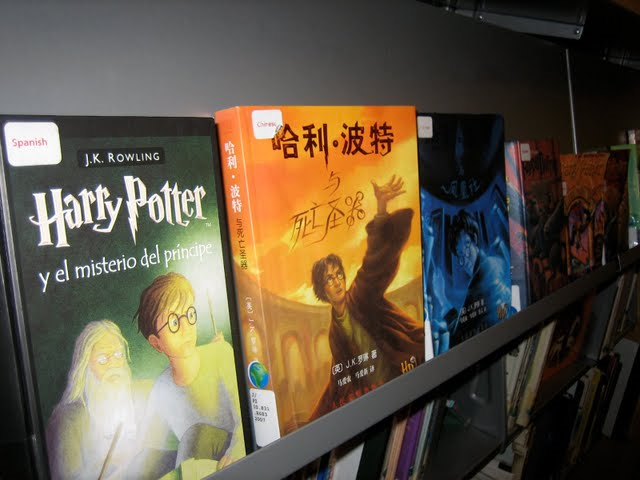
Fig. 2: Harry Potter in many different languages.
Karen then had the opportunity to work as a school librarian in the American School System in Augsburg, Germany. It was while working in Augsburg that she first discovered the International Youth Library (IYL) in Munich (http://www.ijb.de/files/english/HMe_1/Page01.htm). Following her work in the American School System, she was awarded a three month fellowship at the International Youth Library. She spent half the day completing work for the IYL and then spent half the day doing research herself. Karen fondly reminisced about this time spent in Germany and the impact it had on her career.
Returning to Minnesota, Karen took a school library position in Rochester, Minnesota, a city of 100,000 people in southern Minnesota, for half a year. During this time Karen was also completing post-graduate work at the University of Minnesota Library School (now closed), while teaching History of Children's Literature. She also taught Children's Literature for two summers at the University of Regina in Alberta, Canada. She recalls having a tremendous amount of work during this time, but she was reading crème de le crème literature and enjoyed the work.
It was while she was teaching the summer class in Regina, Alberta, that the Kerlan Collection position opened. While she questioned whether she could give up working with children, she found the academic side to the collections appealed to her greatly and consequently jumped at the opportunity. With the unique and applicable background she had acquired she was well-qualified and was hired for the position. Surprisingly, she actually took a salary cut when she took the position.
Karen expanded her professional development by entering the PhD program at the University of Minnesota in the American Studies program. She took a large number of Scandinavian courses and also took a class with David Noble, a very well-known American Studies professor at the time.
Karen's role within the overall University of Minnesota structure is rather unusual. She is considered a faculty member, professor and curator. When Karen started working at the University of Minnesota librarians were given faculty status, but this is generally no longer the case.
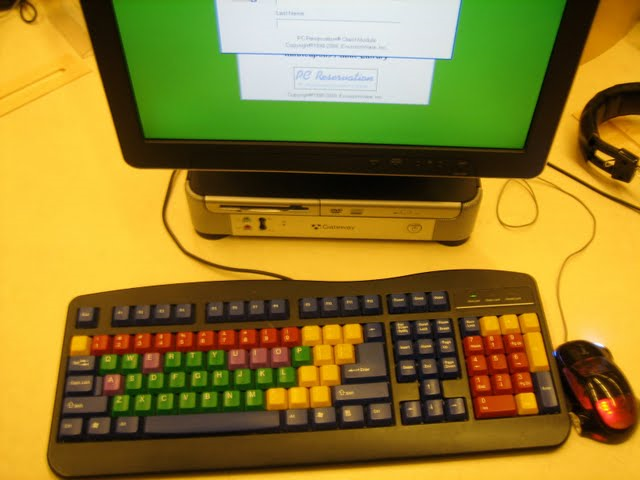
Fig. 3: Computers in the Children's section.
There is color coding that differentiates vowels, consonants, numbers, and other symbols on the keyboard.
What a Children's Literature Curator Does
There are three parts to Karen's job related to the University of Minnesota's mission: teaching, research and professional outreach. An example of professional outreach is the recent 60th anniversary event that Karen organized (http://special.lib.umn.edu/clrc/kerlan/newsletters/2009/Kerlan_Fall_2009.pdf).
The challenge of the job is to acquire materials that will be used now or in the future by researchers and/or exhibited. The position is a balancing act, because the Kerlan collection does not want to acquire material it cannot process or loan. Karen stated, “We want to acquire material people want to see and use. The temptation is to have too many events that sap our time and energy from the building blocks of collection development.” Another challenge is the research it takes to know who to include in the collection.
I was very interested to know whether the Kerlan Collection had any digital projects in development. The Kerlan Collection is part of the Digital Conservancy (http://conservancy.umn.edu/), a digital repository at the University of Minnesota that focuses on conserving institutional digital resources.
Copyright issues are a hindrance to digitizing much of the Kerlan Collection. The Kerlan deals with unique issues, because they have to receive the literary rights or the item has to be out of copyright. This is a challenge with much of the primary material, because often the heirs have the rights to the work. It is often difficult dealing with heirs. This is because they might think there is monetary value in what the Kerlan Collection is doing with the material, when in reality there is little or no monetary value.
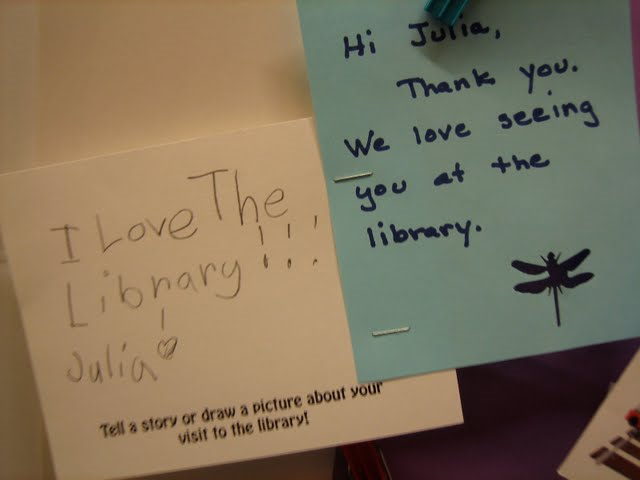
Fig. 4: What a patron thinks of the library!
Changing Nature of Children's Literature and the Role Children's Literature in Society
As Karen has worked with children's literature for many years, I asked what her perspective is on the changing nature of children's literature and the role of children's literature in society, especially how this affects her collection development policy.
How has the world of children's literature changed and how has your collection development responded to that?
Still thinking along the lines of digitization, Karen addressed the affect technological changes have had on their ability to collect material for the collection. Karen stated that authors are writing electronically and illustrators are using computer programs to illustrate. This makes it very challenging for the Kerlan Collection to gather primary materials. Currently they request printouts – fearing that the technology will change and they will not have access to the primary digital material.
What has changed in what is considered children's/young adult literature over the years?
The divide between children's literature and young adult (YA) literature happened in the 1960s. We aggressively identitfy YA authors and try to get their manuscripts. While the Kerlan collection has increasingly collected YA material, the majority of the collection is a picture book and fiction collection. In addition to YA, there are new forms of material, such as graphic novels – Do we want to include the genre in collection development or not? Should we or should we not leave it to someone else. As of now the Kerlan Collection has chosen to have a sampling.
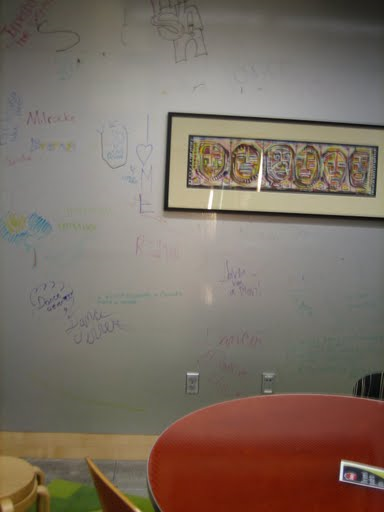
Fig. 5: Private room where patrons can write on the wall.
What is determined “worthwhile” in terms of standing the test of time, in either a cultural phenomenon perspective, or from a “critical worth” perspective?
“Professional judgment – Dr. Kerlan was interested in the Newbery and Caldecott winners and runners up and collected heavily in that area. We want to be a collection that is used because we have selected well. We go after some materials connected with the Givens collection, such as the Coretta Scott King award winners. I also consult faculty.”
Have the changing reading habits (blogging, video games, ebooks, spoken word) changed how you collect items or do you think they will change your collection?
“These are questions we are facing. Another institution is collecting audiobooks and can do it completely.” The Kerlan Collection lacks a Facebook page and a presence on other social networking sites. Karen sees this as setting priorities and knowing how to best use the time the staff has available. The collection up to this time has been a paper oriented archive. According to Karen, they are open to digitization, but have not made any decisions yet as to how to best approach the digital sphere.
What do you think about the construction of childhood and how it plays into the Kerlan collection?
In answering this question Karen discussed the history of children's literature and the consequences of what one thinks of childhood. She made an analogy to the English parliament's response to the cruelty of horses having to wear bits, while at the same time children were employed across England as chimney sweeps. You can follow historical developments and our attitudes towards children through the pages of children's books. Social issues are exposed by children's books, such as bullying and teens and cutting. Karen also cited Virginia Walters and her five concepts of a child: the Child as Reader, the Child of the Information Age, the Child in the Community, the Global Child and the Empowered Child (http://www.alastore.ala.org/pdf/1009AL_Walter.pdf) as an influence on her way of thinking about children and literature.
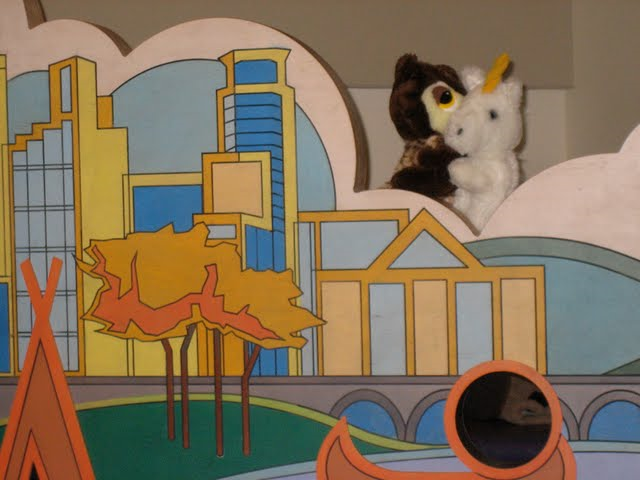
Fig. 6: Puppets
The German Connection
Karen has a longstanding connection with Germany, from her time spent there as a fellow, and through a continued interest in German children's literature. She recently had the opportunity to visit the triangle of children's literature collections, the Institut für Jugendbuchforschung at the Goethe-Universität (Institute for the research of juvenile books), the Internationale Jugendbibliothek München (International Youth Library) and the Kinderbuchabteilung at the Staatsbibliothek zu Berlin. (Children's books section at the Berlin State Libray).
Finally, I had to ask what Karen's favorite things in the collection were. She replied, “Millions of Cats by Wanda Gag from Minnesota. Caddie Woodlawn. Catherine Patterson's books leave me very satisfied. Gustaf Tenggren on the whimsical side.”
References and Further Resources
ALA-ALSC (American Library Association-Association for Library Service to Children) http://www.ala.org/ala/mgrps/divs/alsc/index.cfm
Archie Givens, Sr. Collection of African American Literature University of Minnesota Libraries http://special.lib.umn.edu/rare/givens/
Caldecott Awards - ALA http://www.ala.org/ala/mgrps/divs/alsc/awardsgrants/bookmedia/caldecottmedal/caldecottmedal.cfm
Coretta Scott King Book Awards - ALA http://www.ala.org/ala/mgrps/rts/emiert/cskbookawards/index.cfm
Institut für Jugendbuchforschung, Goethe-Universität http://www.uni-frankfurt.de/fb/fb10/jubufo/index.htm
Internationale Jugendbibliothek München (International Youth Library) http://www.ijb.de/
Kerlan Collection http://special.lib.umn.edu/clrc/kerlan/index.php
Kinderbuchabteilung: Staatsbibliothek zu Berlin http://staatsbibliothek-berlin.de/kinderbuchabteilung.html
Newbery Awards –ALA http://www.ala.org/ala/mgrps/divs/alsc/awardsgrants/bookmedia/newberymedal/newberymedal.cfm
University of Minnesota Digital Conservancy http://conservancy.umn.edu/
Walter, V. A. The children we serve. http://www.alastore.ala.org/pdf/1009AL_Walter.pdf
Anne Mostad-Jensen is recent graduate of the Master of Library and Information Science program at the College of St. Catherine in St. Paul, Minnesota.